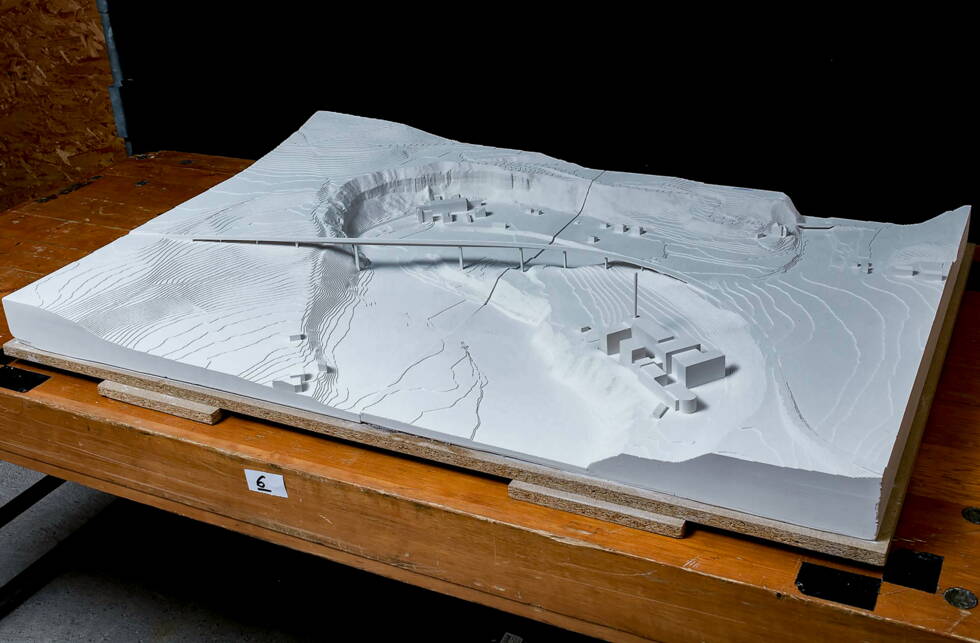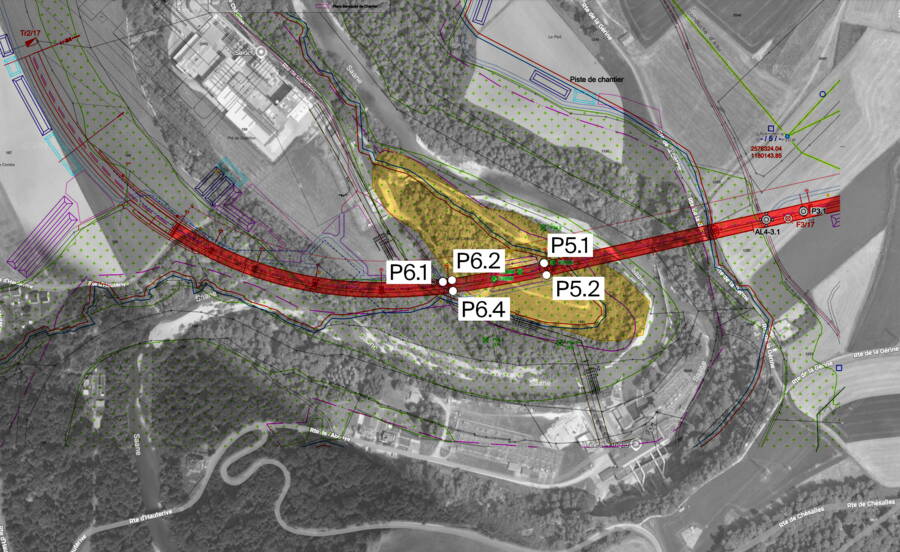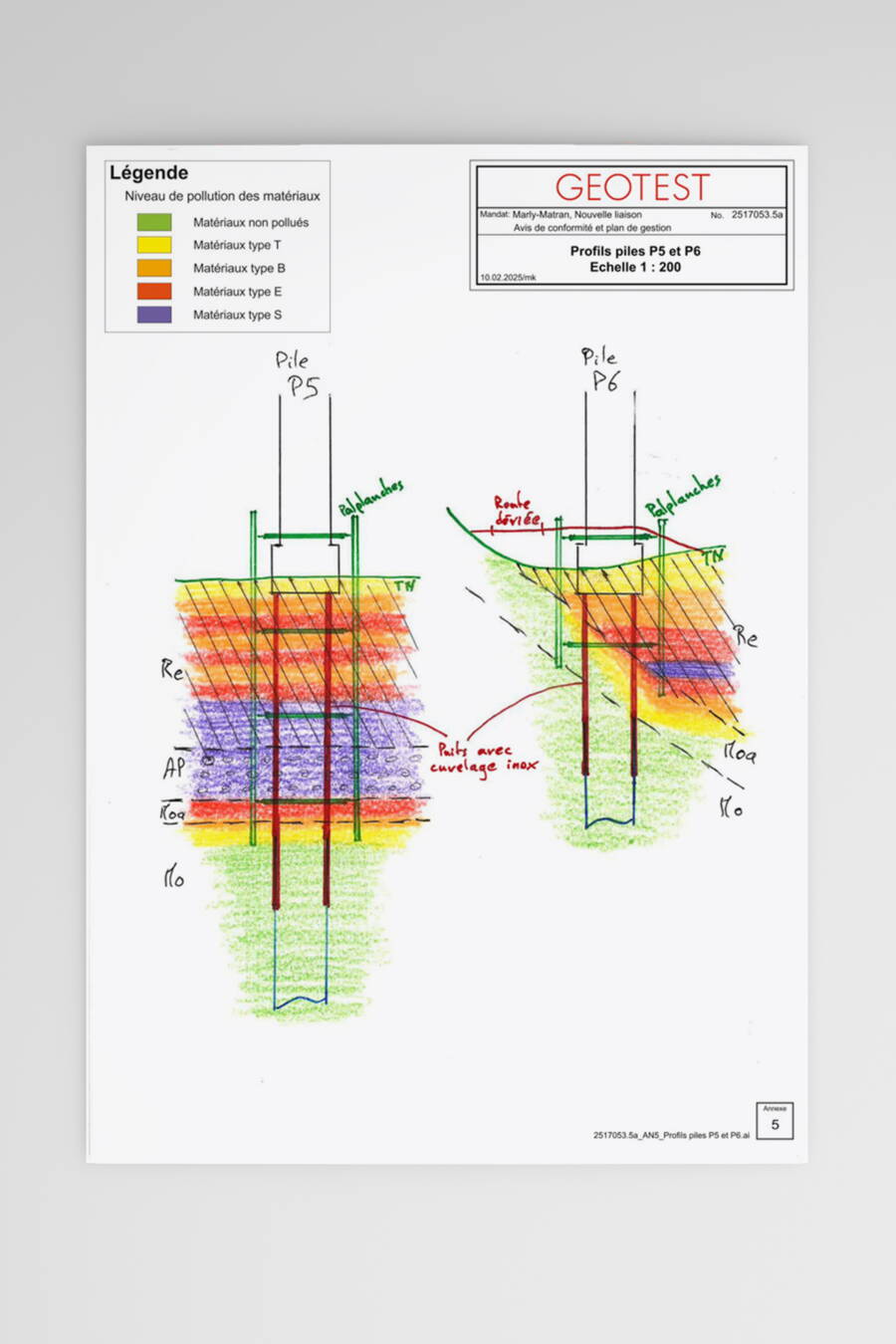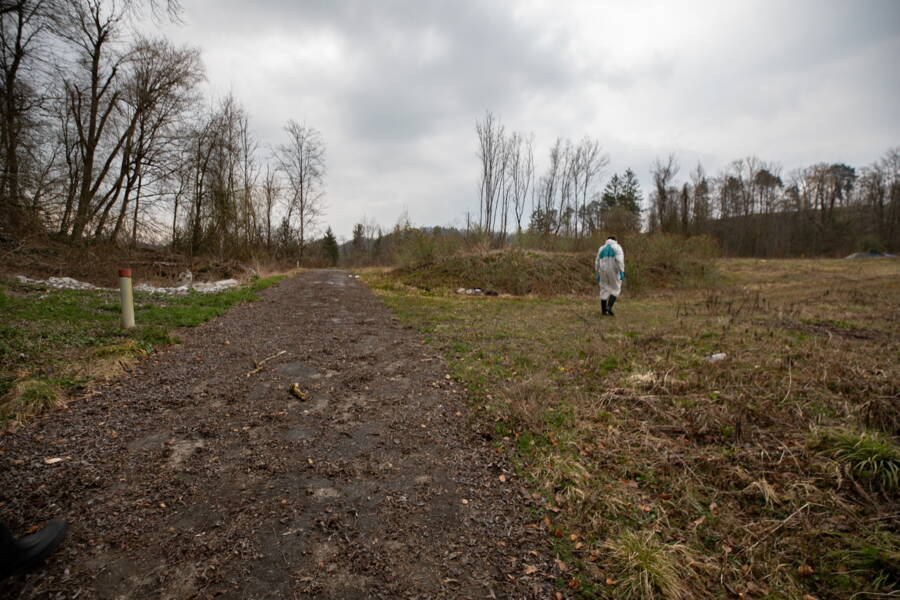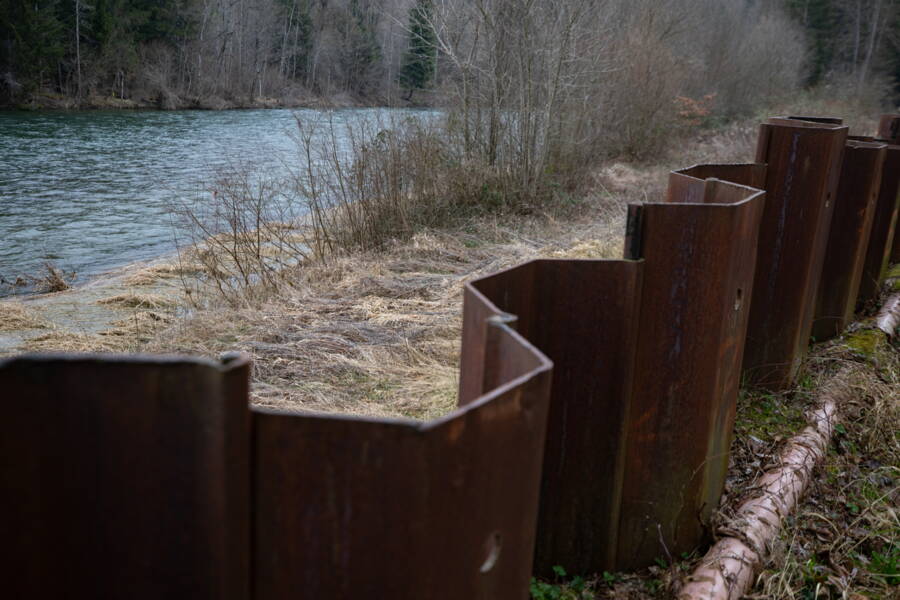Bridge construction on contaminated material – the La Pila challenge
GEOTEST brought to the project its many years of experience in the fields of geotechnics, contaminated site management, and environmental geology. Particular focus was placed on:
Site investigations to determine the load-bearing capacity and settlement prognosis in the landfill.
Contaminated site assessment regarding pollutant distribution, permeability and intervention risks.
Hydrogeological studies to assess the impact of the bridge pier on groundwater drainage.
Development of a site-specific solution for the bridge foundation that combines safety and remediability.
The investigations were carried out in close consultation with the cantonal civil engineering and environmental authorities.
The solution based on GEOTEST’s analyses will make it possible for the pier to be constructed without any negative impacts on the subsequent landfill remediation. The key elements of this solution are:
A special deep foundation that prevents contaminated seepage water from spreading into clean material.
Technical precautions that allow access to the landfill for remediation measures during and after bridge construction.
Permanent sealing and securing of the foundation against potential pollutant pathways.
This solution takes into account both the long-term stability of the bridge and the requirements for subsequent environmentally sound remediation of the landfill site.
The Canton of Fribourg has already approved partial remediation of the La Pila landfill site. The construction of the Marly–Matran link must not hinder this remediation.
GEOTEST’s services in this project highlight the importance of interdisciplinary expertise when infrastructure projects come into contact with contaminated sites. The combination of geotechnical know-how, environmental geology, and a viable engineering solution was crucial in achieving the planning objectives without compromising the environment.
In addition to the technical investigations, GEOTEST also took on the risk assessment, the development of a viable solution for the bridge foundation, and the technical support of the planning teams. The result is an integrative concept that considers both the structural requirements of the bridge’s construction and the environmental legal framework for subsequent landfill remediation.
This made it possible to resolve a central conflict of objectives between infrastructure development and contaminated site protection in a technically sound and future-proof manner.

